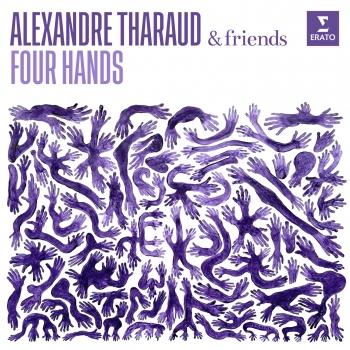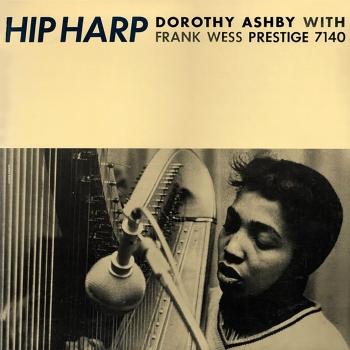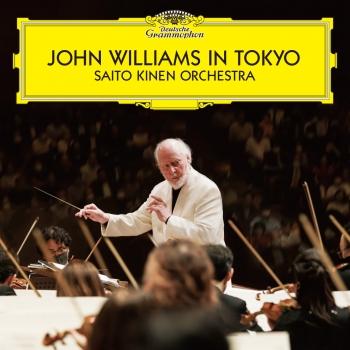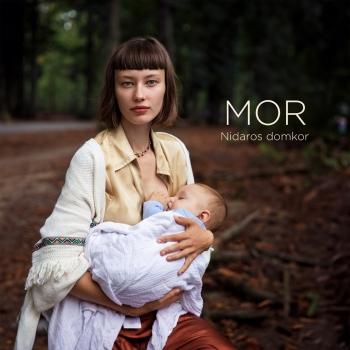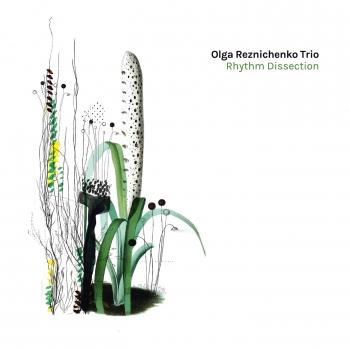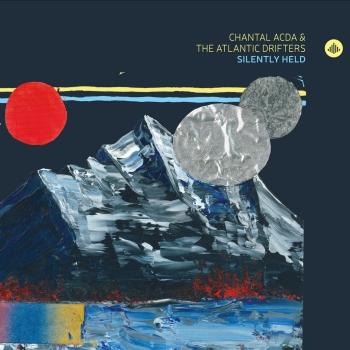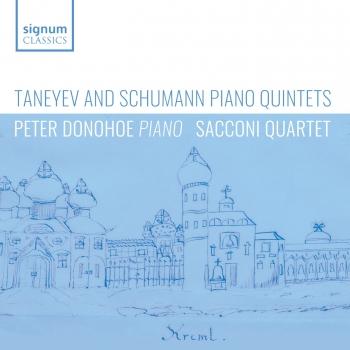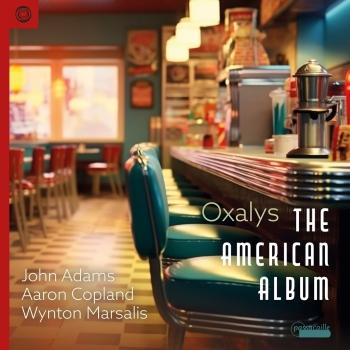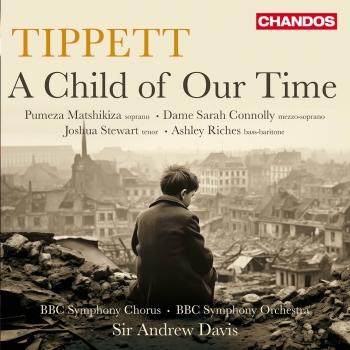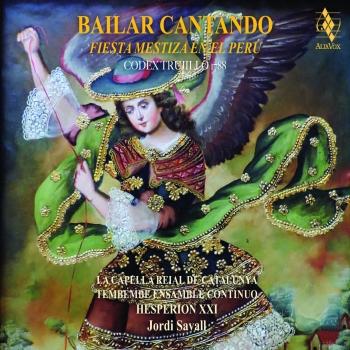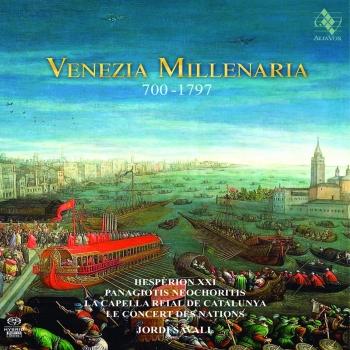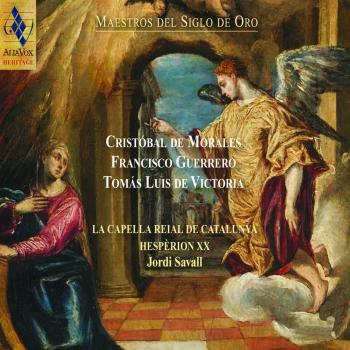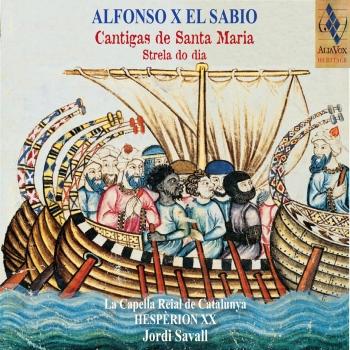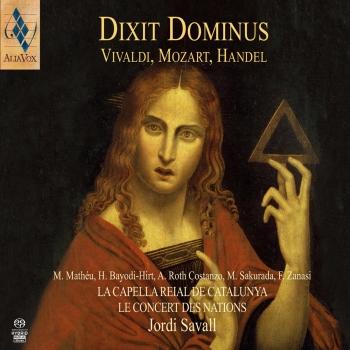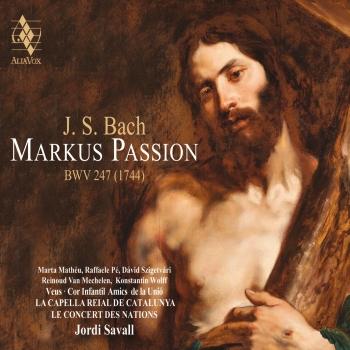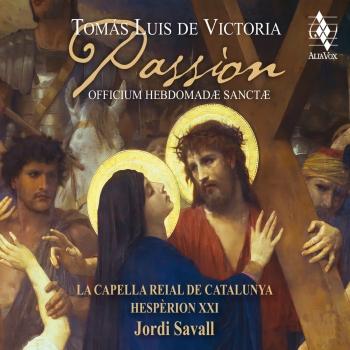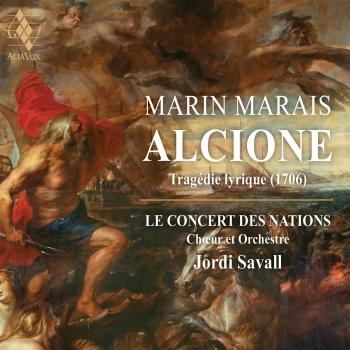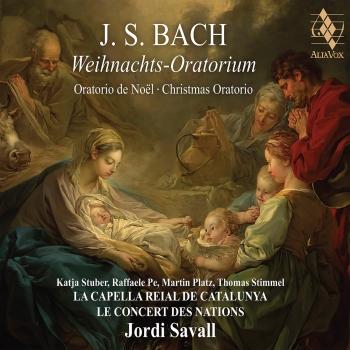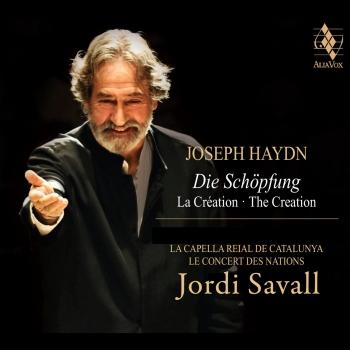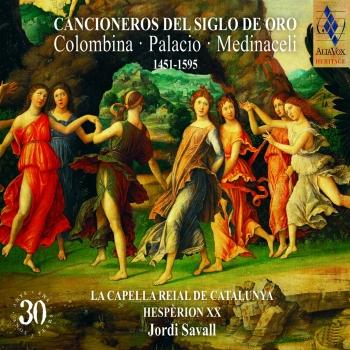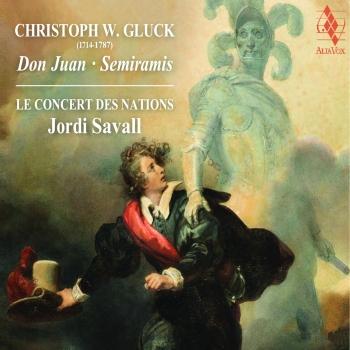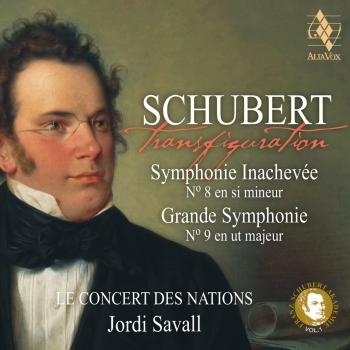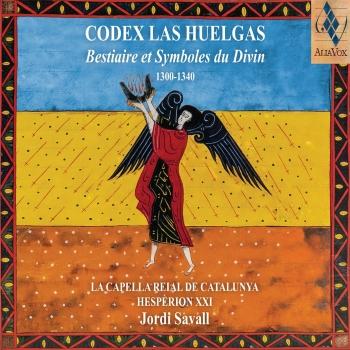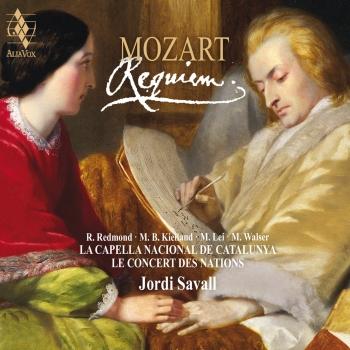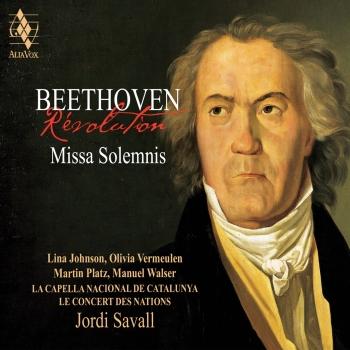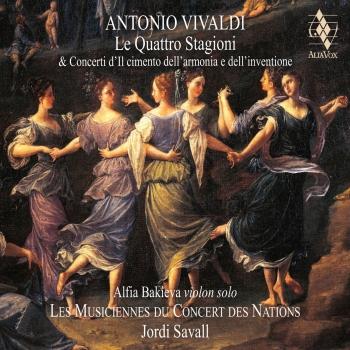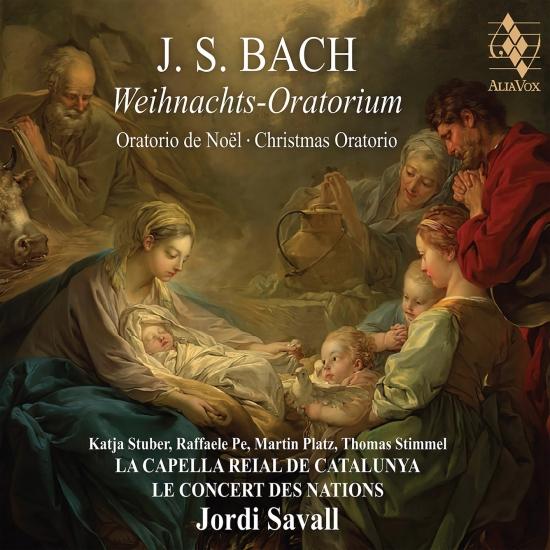
J. S. Bach: Weihnachts-Oratorium Jordi Savall
Album info
Album-Release:
2020
HRA-Release:
03.12.2021
Label: Alia Vox
Genre: Classical
Subgenre: Vocal
Artist: Jordi Savall
Composer: Johann Sebastian Bach (1685-1750)
Album including Album cover
- Johann Sebastian Bach (1685 - 1750):
- 1Bach: I. TEIL - Jauchzet, frohlocket, auf, preiset die Tage - 1. Chor08:02
- 2Bach: Evangelist: Es begab sich aber zu der Zeit01:17
- 3Bach: Rezitativ (Alt): Nun wird mein liebster Braütigam00:58
- 4Bach: Arie (Alt): Bereite dich, Zion, mit zärtlichen Trieben05:10
- 5Bach: Choral: Wie soll ich dich empfangen?01:19
- 6Bach: Evangelist: Und sie gebar ihren ersten Sohn00:21
- 7Bach: Choral (Sopran), Rezitativ (Bass): Er ist auf Erden kommen arm02:38
- 8Bach: Arie (Bass): Großer Herr, o starker König04:49
- 9Bach: Choral: Ach mein herzliebes Jesulein01:14
- 10Bach: II. TEIL - Und es waren Hirten in derselben Gegend - 10. Sinfonia05:24
- 11Bach: Evangelist: Und es waren Hirten in derselben00:38
- 12Bach: Choral: Brich an, o schönes Morgenlicht01:07
- 13Bach: Evangelist: Der Engel Und der Engel sprach zu ihnen00:48
- 14Bach: Rezitativ (Bass): Was Gott dem Abraham verheissen00:38
- 15Bach: Arie (Tenor): Frohe Hirten, eilt, ach eilet03:31
- 16Bach: Evangelist: Und das habt zum Zeichen00:18
- 17Bach: Choral: Schaut hin, dort liegt im finstern Stall00:41
- 18Bach: Rezitativ (Bass): So geht denn hin, ihr Hirten, geht00:49
- 19Bach: Arie (Alt): Schlafe, mein Liebster, genieße der Ruh08:41
- 20Bach: Evangelist: Und alsobald war da bei dem Engel00:11
- 21Bach: Chor: Ehre sei Gott in der Höhe02:29
- 22Bach: Rezitativ (Bass): So recht, ihr Engel, jauchzt und singet00:22
- 23Bach: Choral: Wir singen dir in deinem Heer01:17
- 24Bach: III. TEIL - Herrscher des Himmels, erhîre das Lallen - 24. Chor01:52
- 25Bach: Evangelist: Und da die Engel von ihnen gen Himmel fuhren00:09
- 26Bach: Chor: Lasset uns nun gehen gen Bethlehem00:47
- 27Bach: Rezitativ (Bass): Er hat sein Volk getröste00:36
- 28Bach: Choral: Dies hat er alles uns getan00:47
- 29Bach: Duett (Sopran, Bass): Herr, dein Mitleid, dein Erbarmen07:18
- 30Bach: Evangelist: Und sie kamen eilend und funden beide01:19
- 31Bach: Arie (Alt): Schließe, mein Herze, dies selige Wunder05:10
- 32Bach: Rezitativ (Alt): Ja, ja, mein Herz soll es bewahren00:26
- 33Bach: Choral: Ich will dich mit Fleiß bewahren01:01
- 34Bach: Evangelist: Und die Hirten kehrten wieder um00:24
- 35Bach: Choral: Seid froh dieweil00:48
- 36Bach: (Da Capo) 24. Chor: Herrscher des Himmels, erhöre das Lallen02:05
- 37Bach: IV TEIL - Fallt mit Danken, fallt mit Loben - 36. Chor05:19
- 38Bach: Evangelist: Und da acht Tage um waren00:28
- 39Bach: Rezitativ (Bass): Immanuel, o süßes Wort! - Choral und Arioso (Sopran, Bass) - Rezitativ (Bass)02:16
- 40Bach: Arie (Sopran, Echo-Sopran): Flößt, mein Heiland, flößt dein Namen05:37
- 41Bach: Rezitativ (Bass): mit Choral (Sopran) Wohlan, dein Name soll allein - Jesu, meine Freund und Wonne01:24
- 42Bach: Arie (Tenor): Ich will nur dir zu Ehren leben04:42
- 43Bach: Choral: Jesus richte mein Beginnen01:53
- 44Bach: V. TEIL - Ehre sei dir, Gott, gesungen - 43. Chor06:43
- 45Bach: Evangelist: Da Jesus geboren war zu Bethlehem00:21
- 46Bach: Chor mit Rezitativ (Alt): Wo ist der neugeborne König der Jüden?01:55
- 47Bach: Choral: Dein Glanz all Finsternis verzehrt00:54
- 48Bach: Arie (Bass): Erleucht auch meine finstre Sinnen04:20
- 49Bach: Evangelist: Da das der König Herodes hörte00:10
- 50Bach: Rezitativ (Alt): Warum wollt ihr erschrecke?00:33
- 51Bach: Evangelist: Und ließ versammlen alle Hohenpriester01:13
- 52Stuber, Bach: Terzett (Sopran, Tenor, Alt): Ach, wenn wird die Zeit erscheinen?05:20
- 53Bach: Rezitativ (Alt): Mein Liebster herrschet schon00:31
- 54Bach: Choral: Zwar ist solche Herzensstube01:02
- 55Bach: VI. Teil - Herr, wenn die stolzen Feinde schnauben - 54. Chor05:13
- 56Bach: Evangelist, Herodes: Da berief Herodes die Weisen heimlich00:47
- 57Bach: Rezitativ (Sopran): Du Falscher, suche nur den Herrn zu fällen00:51
- 58Bach: Arie (Sopran): Nur ein Wink von seinen Händen03:32
- 59Bach: Evangelist: Als sie nun den König gehöret hatten01:11
- 60Bach: Choral: Ich steh an deiner Krippen hier01:10
- 61Bach: Evangelist: Und Gott befahl ihnen im Traum00:25
- 62Bach: Rezitativ (Tenor): So geht! Genug, mein Schatz geht nicht von hier01:47
- 63Bach: Arie (Tenor): Nun mögt ihr stolzen Feinde schrecken04:13
- 64Bach: Rezitativ (Quartett): Was will der Höllen Schrecken nun00:36
- 65Bach: Choral: Nun seid ihr wohl gerochen03:26
Info for J. S. Bach: Weihnachts-Oratorium
Universelles Kulturerbe: Johann Sebastian Bach komponierte die sechs Kantaten für die Weihnachtsfeiertage des Jahres 1734, um jeweils eine für jeden Feiertag während der Gottesdienste in den Hauptkirchen von Leipzig, St. Thomas und St. Nikolai, aufführen zu lassen. Sowohl die fortschreitende Erzählung nach den Evangelien von Lukas und Matthäus als auch der musikalische Rahmen geben den Kantaten den Charakter eines autonomen Zyklus, dem sich Jordi Savall und seine Ensembles erstmals stellen.
Ende Mai des Jahres 1723 erhielt Johann Sebastian Bach endlich den Posten des Thomaskantors, womit er Musikdirektor der vier Hauptkirchen der Stadt Leipzig wurde. In diesem Moment begann die letzte Etappe seines Lebens, zweifellos eine der intensivsten, was seine Schaffenskraft anbelangt. Im Lauf der folgenden sechs Jahre sah Bach sich der ungeheuren Aufgabe gegenüber, mindestens vier vollständige Kantatenzyklen jeweils für ein ganzes liturgisches Jahr zu komponieren. Das bedeutete in der Praxis die Komposition von 60 Kantaten jährlich, für alle im Kirchenkalender vorgesehenen Sonn- und Feiertage. In der Tat eine eindrucksvolle Leistung, die er außerdem mit der Leitung des Chors der Thomaskirche bei den Gottesdiensten vereinbaren musste. ...
"Wenn sich der spanische Gambist und Dirigent Jordi Savall eines Werkes annimmt, dann ist für höchste Qualität und Werktreue gesorgt, und eine zeitgemäße Interpretation dürfen wir alle erwarten. Auch wenn ein katalanischer Chor wie die Capella Reial de Catalunya Bach-Choräle und -Chöre singt, stimmt doch alles: Musik, Artikulation und Inbrunst. Bachs Musik ist längst universelles Kulturerbe, auch wenn sie aus einer bestimmten regionalen und religiösen Tradition heraus entstanden ist. Le Concert des Nations steht Jordi Savall als historisch informiertes Barockorchester außerdem zur Verfügung, um mit allen instrumentalen Feinheiten in die exotische Klangwelt Leipzigs um 1730 zu entführen." (Deutschlandfunk Kultur)
Katja Stuber, Sopran
Raffaele Pe, Countertenor
Martin Platz, Tenor
Thomas Stimmel, Bass
La Capella Reial de Catalunya
Le Concert des Nations
Jordi Savall, Dirigent
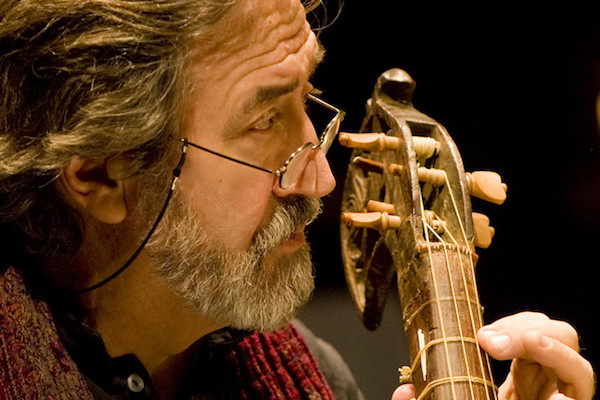 Jordi Savall
Jordi Savall
Born on August 1, 1941, in Igualada, near Barcelona, Spain; married Montserrat Figueras (a musician), 1968. Education: Barcelona Conservatory, diploma; Schola Cantorum Basiliensis, diploma, 1970. Addresses: Record company---Naive Classique, 148 rue du Faubourg Possinière, 75010 Paris, France.
The works performed by Catalan gambist and conductor Jordi Savall span several centuries---from the music of Alfonso el Sabio, king of Castile and Léon, to the works of J. S. Bach---bringing to life the splendor and passion of bygone eras. A performance by Savall is more than a musical experience: the extraordinary power and beauty of his playing magically removes the listener from the flux of time, creating a space in which such obstacles to enjoyment as historical distance, stylistic peculiarities, and idiomatic enigmas simply disappear. For example, historical periods, including the Baroque, have often been described as "distant." Indeed, the physical and mental universe of seventeenth-century France may seem distant to a person living in the twenty-first century. But that distance vanishes when Savall plays the music of the great French master of the bass viol, Marin Marais.
First of all, Savall's main instrument is the viola da gamba, or bass viol (he also plays the smaller viols), not as a quaint relic that needs some special justification or antiquarian explanation. True, in the late 1700s, the viola da gamba---which is not a different kind of cello, but a member of the viol family, a distinct group of instruments of varying sizes---was supplanted by the cello, as the latter instrument, with its potential for virtuosity, satisfied the requirements of changing musical styles. However, to Savall, his instrument is irreplaceable. In fact, according to Savall, the viola da gamba has a particular sonic richness that the more "modern" cello lacks. As Savall explained to Chris Pasles of the Los Angeles Times, the "viola da gamba is totally different from a cello. It's closer to the lute---a lute with a bow, in fact. With six strings, frets like a guitar, a softer sound, it's more rich in different colors." Instead of merely reproducing a particular musical composition, Savall captures and expresses the timeless humanity of the music, illuminating the particular composition as a universally comprehensible document of the human experience. A case in point is Savall's mesmerizing performance of Marais's musical description, found in Book V of his Pièces de viole, of his gallstone operation. Written under the influence of François Couperin's character pieces, this extraordinary composition, especially in Savall's version, remains one of the most suggestively dramatic works of Baroque music.
Born in 1941, near the Catalan city of Barcelona, Savall began his musical education at the age of six. After graduation from the Barcelona Conservatory, where he studied the cello, Savall went to Basel, Switzerland, where he studied the viola da gamba with August Wenzinger at the Schola Cantorum Basiliensis, receiving a diploma in 1970. His other teachers included Wieland Kuijken, in Brussels. In 1973 Savall took over Wenzinger's post at the Schola Cantorum. By the early 1970s, Savall was already considered one the greatest viola da gamba players. In addition, he worked hard to enrich his instrument's repertoire, rescuing many works from oblivion and performing and recording numerous forgotten compositions. Savall thus exemplified, as he still does, the learned performer, who constantly studies the vast field of old music, bringing many neglected compositions to light. Among these lesser-known compositions are works by Marais, whose rich and fascinating oeuvre includes more than 500 pieces for viola da gamba and keyboard accompaniment, assembled in five books of his Pièces de viole.
In 1974 Savall and his wife, soprano Montserrat Figueras, founded Hespèrion XX---later, in the twenty-first century, known as Hespèrion XXI---an international ensemble that has gained great acclaim for its extraordinary performances of music from the Middle Ages to the Baroque. In 1987, returning to his native city after his extensive sojourn in foreign lands, Savall formed the Capella Reial de Catalunya, a vocal group that, under his direction, has performed and recorded music by Tomáa Luis de Victoria, Francisco Guerrero, and Claudio Monteverdi.
In 1989, further expanding his repertoire and musical activities, Savall founded the Concert des Nations, an ensemble consisting of younger musicians from Spain and Latin America. Under Savall's direction, this orchestra, which plays on period instruments, has recorded a variety of works from the Baroque and Classical periods.
Savall's career received a tremendous boost when film director Alain Corneau asked him to play on the soundtrack for Tous les matins du monde, his 1992 film about Marais and his teacher, Sainte-Colombe. Based on Pascal Quignard's admirable 1991 novel--available in English as All the World's Mornings--which imagines the life of the mysterious Sieur de Sainte-Colombe, the film is a spell-binding portrait of seventeenth-century France with the music, performed by Savall, providing a foundation for the narrative. Savall himself indirectly inspired Quignard's novel: it was a 1976 recording by Savall that introduced the writer to Sainte-Colombe's music. The music that Savall performs on the soundtrack is mostly by Marais and Sainte-Colombe, though it also includes a segment of François Couperin's deeply spiritual Leçons des ténèbres. Savall is inspired in his performance of the heartrending Tombeau les regrets, which, in Quignard's imagination, Sainte-Colombe played to conjure up the spirit of his deceased wife. In Savall's hands, this music, which appears as a leitmotif throughout the film, graces the rich tapestry of the film as a mysterious aura.
In 1988 the French Ministry of Culture awarded Savall the title of Officier de l'Ordre des Arts et Lettres. His recordings, numbering more than one hundred, have received many awards, including the Double Disc of Gold and the Diapason d'Or. In 1997 Savall's recording company, Astrée, founded a separate label, Fontalis, for his recordings. The following year, Savall started his own label, Alia Vox, which later reissued many of his earlier recordings at an affordable price. Savall's remarkable career is more than a personal triumph: thanks to his superb musicianship, the viola de gamba has emerged from the shadows of the past, becoming the instrument of choice for many younger performers. For such performers, the rich repertoire of the Renaissance and Baroque offers not only infinite artistic challenges and possibilities but the opportunity to abolish the somewhat artificial barrier separating "early" music from the rest of the musical tradition. (Zoran Minderovic)
This album contains no booklet.

